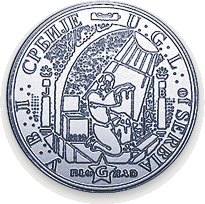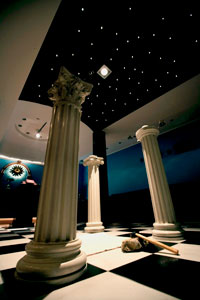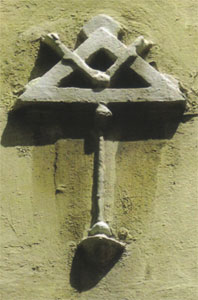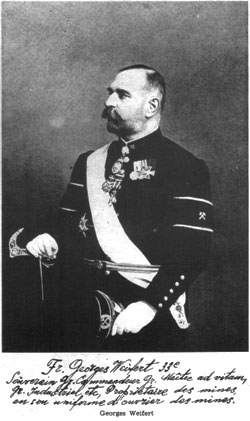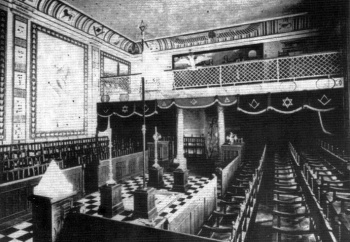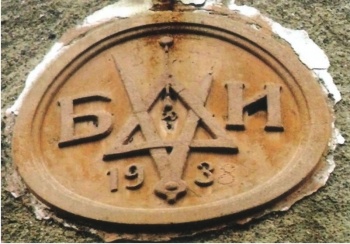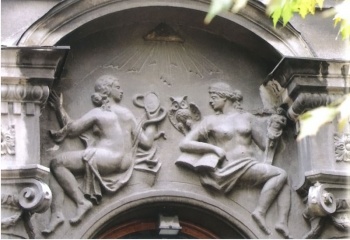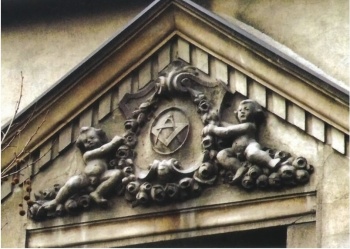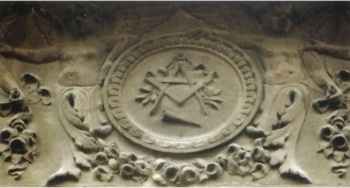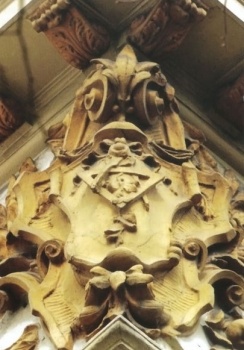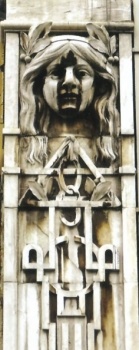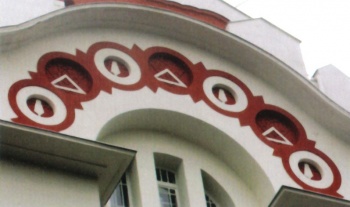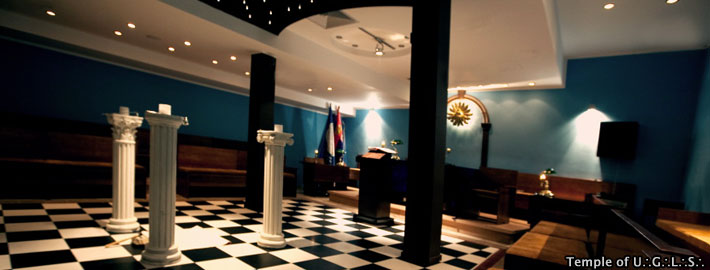Vereinigte Großlogen von Serbien
Vereinigte Großlogen von Serbien
Vorbemerkung zum Thema ‚Regularität und Anerkennung’
Text und die Bilder auf dieser Wiki-Seite stammen größtenteils von der Website der Vereinigen Großloge von Serbien (VGLS).
Bei den ‚Frequently asked Questions’ heißt es dort (Übersetzung aus dem Englischen): „Beachten Sie, dass es in Serbien mehrere selbsternannte ‚wahre und alte Freimaurerorganisationen’ gibt. Das entspricht nicht der Realität. Unglücklicherweise ist das Wort ‚Freimaurer’ keine gesetzlich geschützte Marke. Jeder kann in einem Buchgeschäft Rituale kaufen und seine eigene Großloge einrichten. In Serbien sind die ‚Vereinigten Großlogen von Serbien’ die ‚reguläre’ masonische Obödienz, die sich auf die ‚Vereinigte Großloge von England’ bezieht; das ist die ‚Muttergroßloge’ aller regulären Großlogen der Welt.“
Dazu hält die Redaktion des Freimaurer-Wikis fest: Diese Einschätzung der ‚Vereinigten Großlogen von Serbien’ mag subjektiv stimmen. Objektiv ist sie zu hinterfragen. Begründung: Die ‚Vereinigte Großloge von England’ (UGLE) hat aus dieser Selbsteinschätzung nicht die Konsequenz gezogen, die hier suggeriert wird, nämlich die 'Vereinigten Großlogen von Serbien' als die reguläre Großloge des Landes anzuerkennen. Wie aus der Website der UGLE hervorgeht, erkennt diese nur die Reguläre Großloge von Serbien (RGLS) an.
Wir vom Freimaurer-Wiki berichten über verschiedene Systeme: im allgemeinen, ohne das mit Wertungen zu verbinden. Auch in diesem Fall werten wir nicht: Wir respektieren das legitime Selbstbild der VGLS. Weil das Thema 'Regularität' und die wechselseitige 'Anerkennung' der Großlogen untereinander vielen Freimaurern jedoch wichtig ist, sind wir es unseren Lesern schuldig, auf diese Zweideutigkeit in der Selbstdarstellung der ‚Vereinigten Großlogen von Serbien’ hinzuweisen. RR
Und nun folgen wir der Webseite der VGLS.
Greeting from the Grandmaster
Welcome, Ложа
I have the honor and the pleasure to greet you, and welcome you in the name of the brotherhood to the presentation of the United Grand Lodges of Serbia.
You have the opportunity to get acquainted with the history, development and the goals of free masons, with the special retrospective on its origin and development in Republic of Serbia.
Free masonry is the art above all arts. This sublime art enables us to, through familiarization with our qualities and flaws, repress the bad and with faith in God, with merciful justice, unchanged wisdom, absolute reason and truth, we start positive changes in us, our lives, and likewise in the surroundings.
“People would like to change the world, but nobody wants to change himself.” People with adequate cognition are not afraid to recognize their faults and aberrations, ready to see other opinions, creating the possibility to reach progressive cognition. As Andre Gide points out: “Believe those who seek the truth, doubt those who have found it.”
We will try to keep you informed about the facts on free masonry, not only through our web page, but through advents and publications and other media so that the public would be familiarized with us and our activities. This will in great deal help in truthful and the only right introspection of free masonry through history to present time.
The Serbian masonry needs stability now more than ever. Today, free masons in our country, and all of those who keep account on its further development in general, carry a responsibility larger than ever for the development in Serbia in the future.
The United Grand Lodges of Serbia commenced as a result of free will of free masons in our country to unite and work according to basic postulates and principles of free masonry. In a word, we have finally moved on the only possible road – the right road.
The Grand Master
The United Grand Lodges of Serbia
Die Geschichte der Freimaurerei in Serbien
freie Übersetzung von H. Thorandt
Im 18. Jahrhundert mit dem Niedergang des Absolutismus, begann die Freimaurerei mit ihre Entwicklung in ganz Europa. In dieser Zeit wurden Logen in Belgrad, Vidin und Vlaska gegründet, die miteinander verbunden waren und eine Vereinbarung hatten, weiterhin eine Einheit zu sein. Es ist nicht bekannt in welchem Jahr sich die Loge in Belgrad gründete, unter welchem Namen und in welcher Sprache sie ihre Arbeit ausführten. Es ist bekannt das diese Union Haji-Mustapha-Pasha (genannt Serbische Mutter), Belgrader Provinzial Methodik, Duke Janko Katic, Petar Icko, Cardaklija-Brüder und Griechische Patrioten Riga von Fera beinhaltete.
Es gibt keine Informationen über individuelle Logen in Belgrad in der ersten Dekade des 19. Jahrhunderts, aber es ist bekannt, das seit 1848 die türkische Loge „Ali Koch“ arbeitete in einem Gebäude welches vorher die Städtische Ambulanz gewesen war, und an mehreren Stellen der Fassade sind Triangel und Ägyptische Säulen zu sehen. Die Loge zog um und siedelte sich Stadt im ehemaligen Polizeistützpunkt an und arbeitete dort bis 1862.
In dem Gefühl des Wohlstands und der Entwicklung nationaler Ideen welche sich in Europa um die Mitte des 19. Jahrhunderts ausbildeten, war ein gutes Milieu für die Arbeit, die Ausbreitung sowie für die Entfaltung der Freimaurerei gegeben. In Zemun wurde die Loge „Stella Orientalis“ gegründet, die in deutscher Sprache arbeitete, und deshalb keinen Einfluss auf die spirituelle Entwicklung und kulturellen Fortschritt des serbischen Volkes hatte. Die Loge zog nach Pancevo um, wo sie ihre Arbeit beendete.
Während des Krieges im Jahr 1875 nahe dem Militär Senjak in Belgrad, bildete sich eine Freiwilligenarmee hauptsächlich aus Italienern, in welchem durch den Einfluss des Italienischen Konzils eine Freimaurerloge entstand.
Die erste serbische Loge „Das Licht des Balkans“ wurde in Belgrad im Jahr 1876 gegründet und arbeitete unter italienischem Schutz. Die Loge entwickelte sich in der Zahl ihrer Mitglieder rasant, ihre Mitglieder kümmerten sich um die Verwundeten, halfen in den Krankenhäusern und erleichterten das Leid der Menschen im Knjazevacgebiet.
Wegen der hohe Anzahl von Mitgliedern, bildete sich bald eine weitere Loge "Serbische Gemeinschaft" im Jahr 1881. Beide Logen arbeiteten bis 1883 und schliefen dann ein.
Anstelle dieser Logen bildete sich 1883 eine neue Loge „Gemeinsame Arbeit und Beharrlichkeit“ welche sich aus der Großzahl ehemaliger Mitglieder beider Logen zusammen setzte, und arbeitete unter dem Schutz der italienischen Großloge.
Bald war es nötig eine weitere Loge zu gründen, so dass sich die Loge "Bruder" im Jahr 1890 bildete. Diese Loge war die erste die nach Schutz fragte und von den Nachbarn erhielt und unter der Großloge von Ungarn arbeitete.
The History of Free Masonry in Serbia
In the 18th century with the down of the absolutism, Free Masonry continued its development in the whole of Europe. At that time Lodges were formed in Belgrade, Vidin, and Vlaska, that were connected and had an agreement, so they made an Union. It is not known which year the Lodge in Belgrade was formed, under what name, and in which language the work was done. It is known that the Union included Haji-Mustapha-Pasha (called Serbian Mother), Belgrade Provincial Methody, Duke Janko Katic, Petar Icko, Cardaklija brothers, Greek patriot Riga of Fera.
There is no information about the individual lodges in Belgrade in the first decades of the 19th century, but is known that since 1848 in Belgrade existed a Turkish lodge “Ali Koch”, in a building that was city ambulance, and on which façade a triangle and Egyptian columns were presented. The lodge was moved out of the city under the Main Police and it was there until 1862.
In the ear of prosperous and national ideas that were moving Europe in the mid 19th century, a good surroundings for the work and spreading of Free Masonry were developed as well. In Zemun a lodge “Stella Orientalis” was founded that operated in German, so it did not have any influence on the spiritual development and cultural progress of the Serbian people. The lodge was moved to Pancevo, where it stopped working.
During the war in 1875 in Belgrade, near Military Senjak, an voluntary legion was formed, mainly from Italians, in which, under the influence of the Italian council a free mason lodge was formed.
The first Serbian lodge “The Light of Balkans” was opened in Belgrade in 1876, and worked under the Italian protection. The lodge progressed quickly in the number of members, and it took care of the wounded and helped the hospitals and relieved the suffering of the people in the Knjazevac county. Due to the large number of members, a lodge “Serbian Communion” was formed in 1881. Both lodges were working until 1883, when they were put to sleep.
Instead of these lodges, a new lodge “Unity work and perseverance” was formed in 1883, that has joined in a great number of their members, and it worked under the Italian protection.
Soon it was necessary to open another lodge, so that the lodge “Brother” was formed in 1890. This lodge was the first to ask and gain protection of the neighbor and closer Grand Lodge of Unger.
As the lodge “Brother” took a number of members from Nis, it was necessary to found a new lodge in that place, that was organized in 1892 under the name “Nemanja”.
There was an interesting moment in Serbian free masonry, that took place in National Parliament in Nis in 1899, when one of the deputies attacked free masonry and the minister of education got up and publicly announced that he was a free mason, so he stood in defense of this humane, cultural and patriotic institution.
The free mason movement gets stronger in Vojvodina, when the lodge “Aurora” is formed in Vrsac (1905), lodge “Future” in SOmbor (1909) and lodge “Creation” in Subotica, all under the protection of Grand Lodge of Unger.
Also, the movement gets stronger in Belgrade, where out of the members of the Lodge “Brother” originate three new lodges “Sumadija” under the Hamburg protection, “Union” under the French protection and “Kosovo” in Skopje.
Owing to this kind of development of free masonry, through the contributions of the members the Home of Free Masons was built in the goal of independence and the higher Mason administration that was opened in Belgrade in April of 1912 (Studenicka Street 46a, in Vracar).
May 9th 1912 is a very important date in Serbian Masonry, because it entered into a new phase through foundation of the SUPREME COUNCIL OF SERBIA (Supreme Conseil pour la Serbie), in the presence and the organization of the Greek representative of the Supreme Council of Greece. For the Grand Master (Commandeur) the honorary principal of the lodge “Brother” was elected, a very important free mason Djordje Weiffert. This is the act that made Serbian masonry independent so it came into regular relations with worlds grand mason authorities. Lodges “Brother”, “Sumadija”, “Unity work and perseverance” and “Kosovo” were under the protection of the Supreme Council.
During the wars 1912-1913 Serbian Free Masonry stopped all regular mason works, so it performed patriotic duties to the country. A great number of Serbian and Croatian was exiled, but they developed the work in the foreign lands that would interest political circles to the unification of the nationalities. The Zagreb lodges “Love to the Fellow Man” “Maximilian Vrhovac” and “Vigilance” from Osijek got rid of the Unger protection in 1917, so they became independent. After the war, an agreement was established between them and the Supreme Council of Serbia on Union.
The Kingdom of Serbs, Croats and Slovenians was formed on December 1st 1918.
On June 9th 1919 in Zagreb, on the emergency Assembly the union and the formation of the Grand Lodge of Serbs, Croats and Slovenians “Yugoslavia” was announced, with the headquarters in Belgrade, where the election of the Honorees and the members of the Union Council was performed. Djordje Weiffert was elected for the Grand Master. Symbolic degrees (apprentice, assessor and master) were parted, so two new systems were created: Grand Lodge of Serbs, Croats and Slovenians “Yugoslavia” and the Supreme Council of the old and accepted Scottish order for the Kingdom of Serbs, Croats and Slovenians. The Grand Lodge joined the mason relations with more than 80 Grand Lodges and Orients in the world, and cooperated with international free mason association AMI in the purpose of the world peace. Under the protection of this Grand Lodge there were 18 free mason workshops and around 1000 members.
The Grand Lodge of Serbs, Croats and Slovenians “Yugoslavia” was, in Belgrade in 1926, the organizer of the International Mason Congress under the name “In the Sign of Peace”. Under the International Mason Association, the Congress was attended by 56 representatives of 20 national unions from 15 European states and the representatives of two front-chamber unions.
As the name of the country was changed on January 6th 1929, on the same year on the Annual Assembly it was decided to change the name of the Grand Lodge into the Grand Lodge “Yugoslavia”. The number of workshops grew to 30 with over 2000 members.
The Lodges of Serbian Masonry were involved in charity and merciful work, with which they improved the state of many unfortunate and poor, and through the foundation of humane and cultural funds. This is how the first charity organization was formed “The Society and Department for Poor and Abandoned Children” as a humane and educational institution, and the Home was built with the help of the Municipality. The patriotic “Society Saint Sava” opened and supported schools in the oppressed areas, printed books and helped churches and monasteries. In the Home of this society an Evening School was established, and thousands of children passed through it, Preparatory Teachers School, as well as the Pensions, where the young men that came to Belgrade to learn were supported. The Lodge “Brother” founded Patriotic Case, while the influence over the minister of education provided the formation of the Students Meal, for poor apprentices and students. Soon, the “Society King Decanski” was formed and its Home for Deaf Children. On the initiative and the material support of brother Djordje Weiffert the Disability Fund Saint George was founded, supported also by the great estate of the benefactor Nikola Spasic, that was aimed at relieving the life of our war invalids and taking care of their orphans.
In the beginning of August 1940 the Grand Lodge of Yugoslavia, due to the immediate war danger makes a decision on stoppage of every work in the lodges under its protection and “self sleeping”.
The preparation work for the renewal of the free mason work were executed with the registration of the three Serbian Lodges and those were: “Brother”, “Unity work and perseverance” and “Maximilian Vrhovac”. The United Grand Lodge of Germany offered to reactivate the Grand Lodge of Yugoslavia. The act of ceremonial renewal of work was done on June 23rd 1990 in Belgrade, that signified the new beginning with the recognition of the United Grand Lodge of Germany.
Two brotherhoods of the Grand Lodge of Yugoslavia, in March 1993, in Rimini, Italy, held an Assembly, during which elections were performed and made a decision to change the name to Regular Grand Lodge “Yugoslavia”, which was confirmed from the United Grand Lodge of Germany, and the rest. Even so, a certain number of brothers and lodges continue to work under the protection of the Grand Lodge “Yugoslavia”.
In 2006 Regular Grand Lodge Yugoslavia changes the name into Regular Grand Lodge of Serbia, but in the same year a majority of brothers and Lodges from the Regular Grand Lodge of Serbia, brothers and lodges from Grand Lodge “Yugoslavia”, and brothers from lodges of the Grand National Lodge of Serbia and Montenegro, unite into the United Grand Lodges of Serbia (all free mason workshops, as well as the U.G.L.S. were registered with the appropriate government officials).
1990 was extremely important because free masonry was reactivated in our country, but it developed in the restless time, the time of which many will have bad memories in our country. The fact stands that among the carriers of this supreme idea in such a hard time there were many of those that can never be called free or independent men, so the development of free masonry from 1990 to 2006 was troubled with many human flaws and weaknesses. Because of that, and the desire to finally commence with the true development of free masonry that is based on basic postulates and principles, unification of brothers and lodges occurs into the United Grand Lodges of Serbia. The results show that we are on the right path. For the first time since the reactivation, with the foundation of the United Grand Lodges of Serbia two temples were built, two more are in the process of being built, many humane actions were conducted that were supported by the public, and the brotherly chain was strengthened more than ever willing to work and develop the free masonry in our country and for the better life of all out citizens.
It is obvious that we are on the right path after a long time, the free masonry that was established in 1919 continues — may the tradition begin.
Die Logen der VGLS
Freimaurerische Giebel und Fresken an Gebäuden in Belgrad
Videos
Siehe auch
- Reguläre Großloge von Serbien
- Regularität#Die lieben Familien
- Kroatien
- Bosnien und Herzegowina
- Slowenien
- Österreich
- Serbische Anti-Freimaurer-Ausstellung
Links
- Vereinigte Großlogen von Serbien https://suvls.com/

